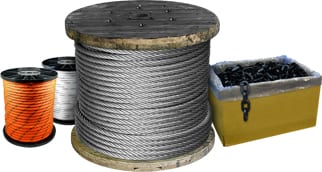Product Description
POSITIVE SAFETY GROUND RELEASE SHACKLE
Attach a 1/2" rope to Trip Lanyard (A) and Plunger Lanyard (B) of sufficient length to be handheld when load is lifted into position and secured so shackle can be released.
TO ATTACH SHACKLE: When the Plunger Lanyard (B) is retracted the Trip Lanyard (A) is spring-loaded and will be extended into the Plunger and will hold the Plunger in its retracted position. To release the Plunger, simply pull (retract) (A) and the Plunger will extend into position for lifting and (A) will extend behind (B) to lock the Plunger in its extended position.
TO RELEASE SHACKLE: Pull/retract (A) and hold in the retracted position until (B) is retracted, then release (A) and it will extend into (B) and keep the Plunger from re-extending.
BOTH ROPES ON (A) AND (B) MUST BE SEPARATE AND NOT TIED TOGETHER.
- A ground release shackle for sheet pile
- Made from high tensile strength heat treated carbon steel with an alloy pin
- Simple plunger design allows safe and effective operation from the ground
- Individually proof-tested and serialized (certificates available upon request)
Specifications
Safety Notice
Although Bishop Lifting strives to manufacture and sell the highest quality rigging and safety gear, use of the gear is dangerous if not used correctly by competent trained professionals. Bishop Lifting disclaims any liability resulting from the misuse of its rigging and safety gear. Please take a moment to more thoroughly review our disclaimer.
Bishop Lifting rigging and safety gear is only intended to be used by competent trained professionals. Misuse of the rigging and safety gear can result in serious injury up to and including loss of life. As such, Bishop Lifting disclaims liability for any misuse or incorrect product selection by our customers.
Rigging and safety gear purchased from Bishop Lifting should be used in strict accordance with all industry and OSHA standards. At no time should rigging or safety gear be used beyond its certified load ratings (aka Working Load Limits). Normal wear and tear should be expected with use of rigging and safety gear; therefore, all gear should be thoroughly inspected before each and every use. Worn or unsafe rigging and safety gear should never be used.














